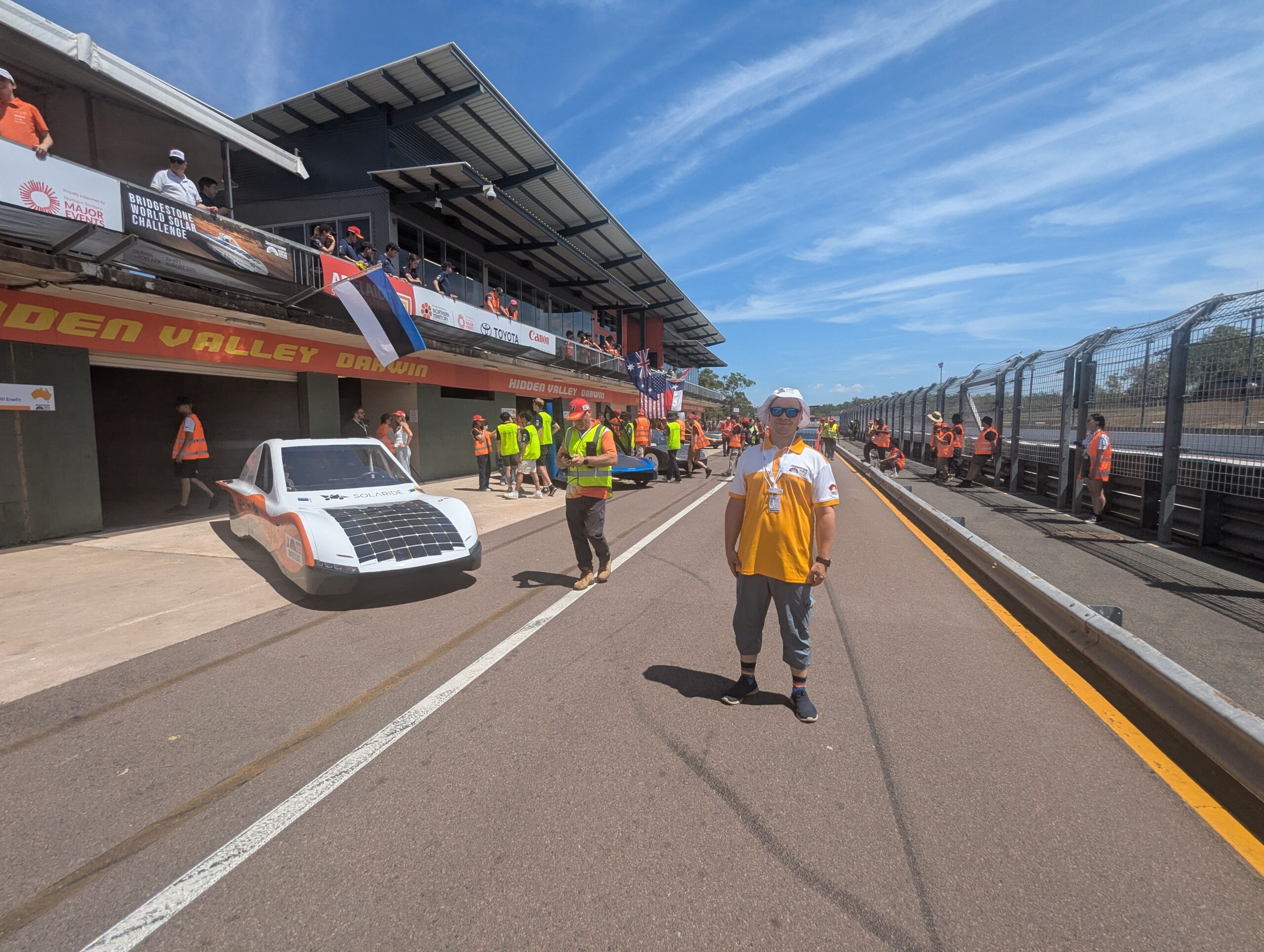This year, the Bridgestone World Solar Challenge (BWSC) took place in Australia – a 3,000-kilometre journey from Darwin to Adelaide in solar-powered cars, widely considered the most prestigious event in the field. Nearly 40 teams from 19 countries lined up at the starting line, including Estonia’s Solaride, who claimed an impressive second place in the Cruiser class.
Revismo engineer Ardo Tiits participated for the first time in the BWSC as an official judge, becoming the first Estonian to take on such a role. He had previously acted as a judge at the Sasol Solar Challenge in South Africa.
In Australia, Ardo took on two key roles: he inspected the electrical safety of the vehicles as part of the technical team and followed the teams throughout the full 3,000-kilometre course as an observer.
Workdays started before sunrise with battery seal checks, launch procedure recordings, and team readiness assessments. Every stop, driver switch, and maintenance task during the day required documentation, and each evening ended with filling in detailed logbooks.
World-Class Engineering Creativity
The competition brought together some of the world’s leading engineering universities, including TU Delft, Tokai University, and the University of Michigan. Ardo highlighted a standout innovation by the Onda Solare team from the University of Bologna: a radically unconventional front suspension system that used carbon composite components instead of traditional springs and shock absorbers.
“Their design lacked classic shock absorbers and springs, as well as conventional joints. Instead, they used A-shaped carbon composite control arms, with specific areas engineered to flex and allow controlled movement without any mechanical moving parts. A composite bar connecting the wheel hubs served as the spring element, bearing the load. This allowed for around 70 mm of vertical wheel travel and was a clear example of creative, material-driven engineering thinking,” Ardo explained.
A Storm Brings a Dramatic Twist to the Final Day
The Australian outback presented tough challenges. On the evening before the final race day, a severe storm hit the coastal regions, continuing into the next morning. Due to the severe weather warning, the organisers were forced to delay the start.
Once conditions improved, a new start signal was given at 8:45 AM, kicking off a decisive final sprint. The remaining 200 kilometers had to be driven in strong crosswinds, requiring precise handling and excellent teamwork.
“On the last day, I was following the VTC team. Solaride was trailing the leader by just ten kilometers,” Ardo recalled. “The VTC car, with its large solar panel surface, was swaying significantly in the wind, whereas Solaride stayed firmly on course,” he noted.
The final stretch turned into a thrilling finish. VTC ultimately won the Cruiser class, with Solaride securing a well-earned second place.
Estonia’s Strength Lies in Creativity
Ardo emphasized that success doesn’t stem solely from large budgets, but from clear goals, collaboration, and the courage to experiment.
“Estonia’s strength lies in flexibility, creativity, and practical thinking. Our engineers and students are fully capable of tackling global challenges and contributing to international green technology efforts,” he said.
“Experiences like this don’t just inspire the younger generation – they also reaffirm to the entire Estonian engineering sector that our knowledge and solutions can help shape the future far more broadly than we ever imagined,” Ardo added.
Pictures: Ardo Tiits private collection.

